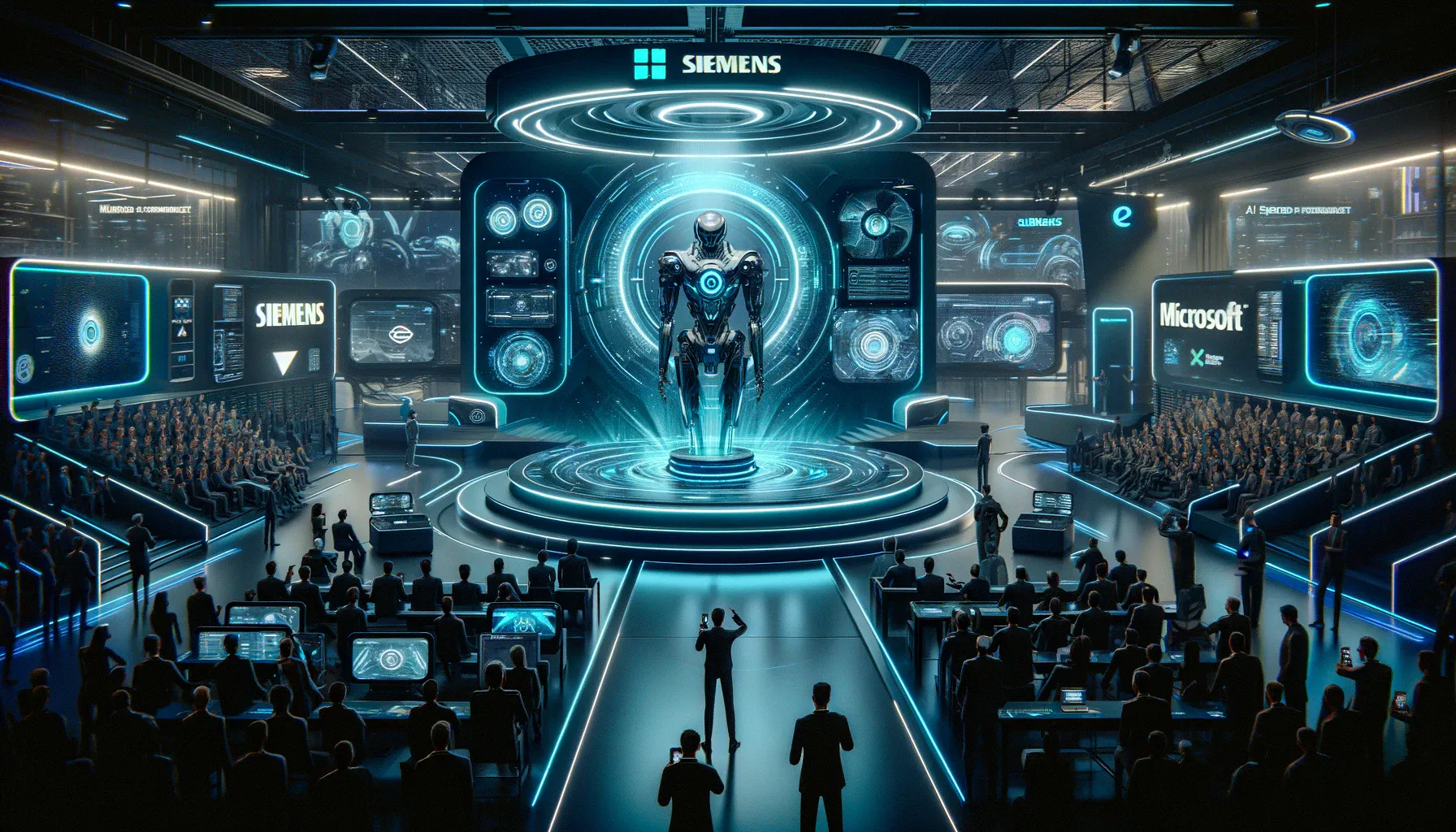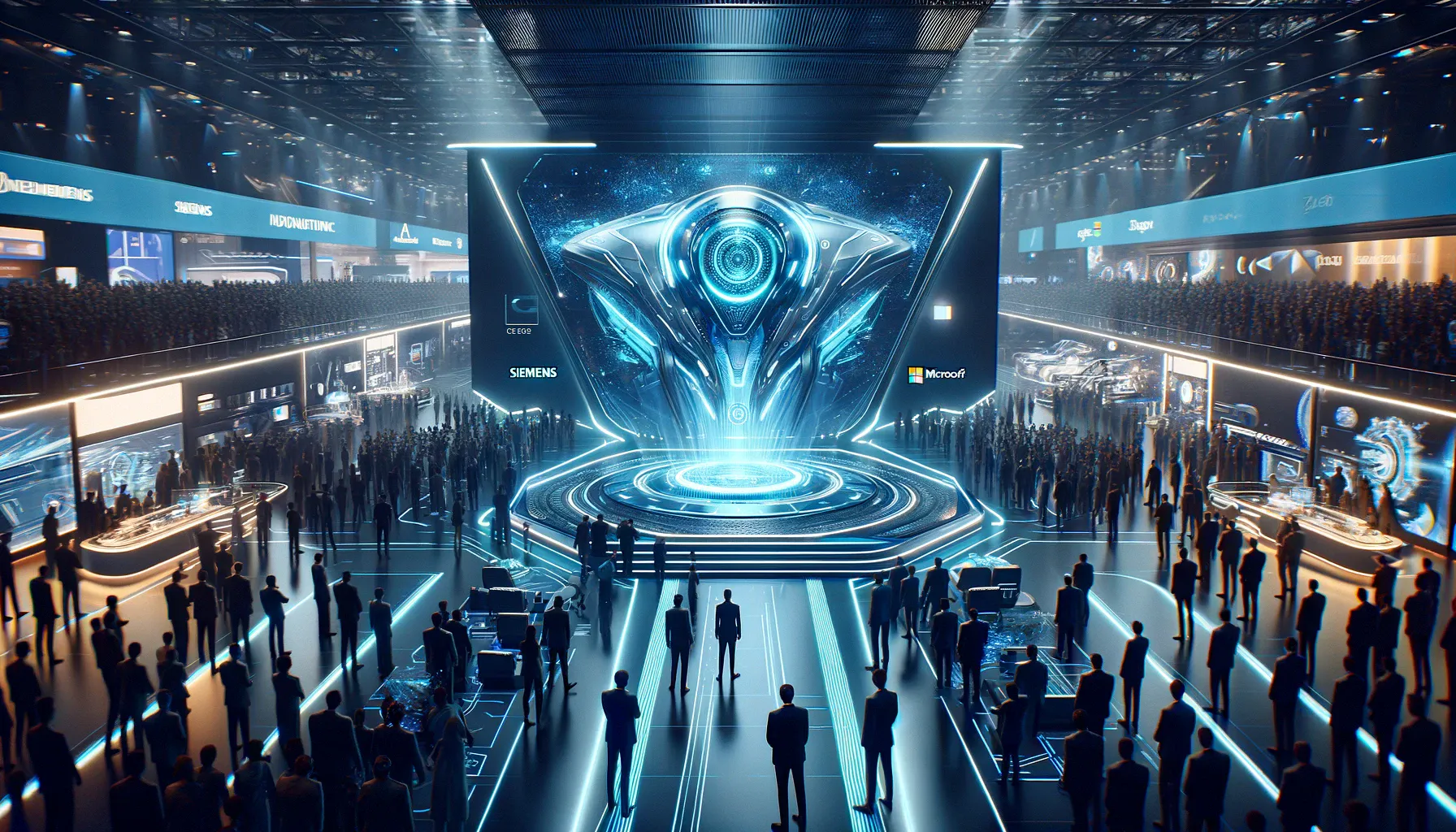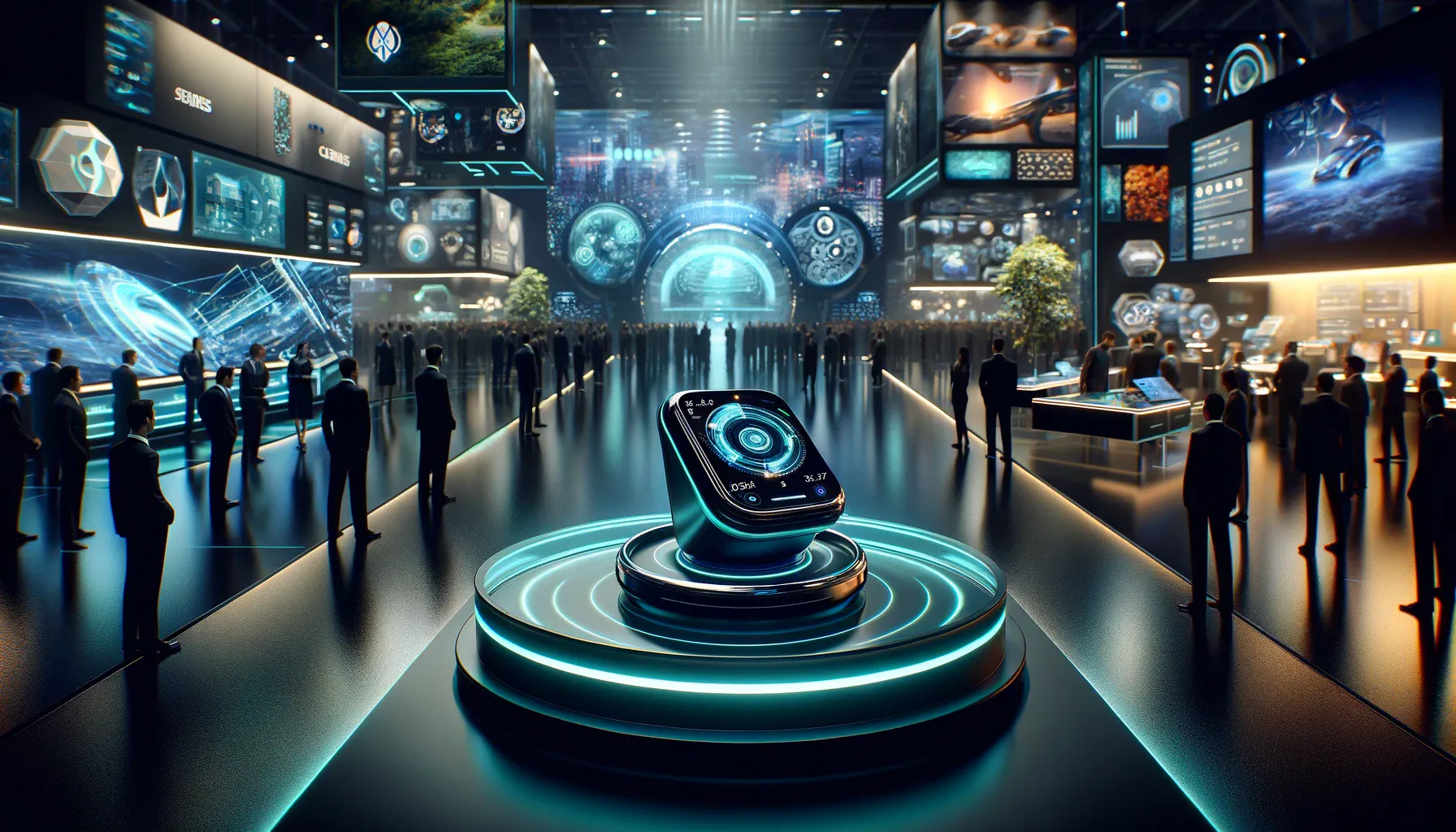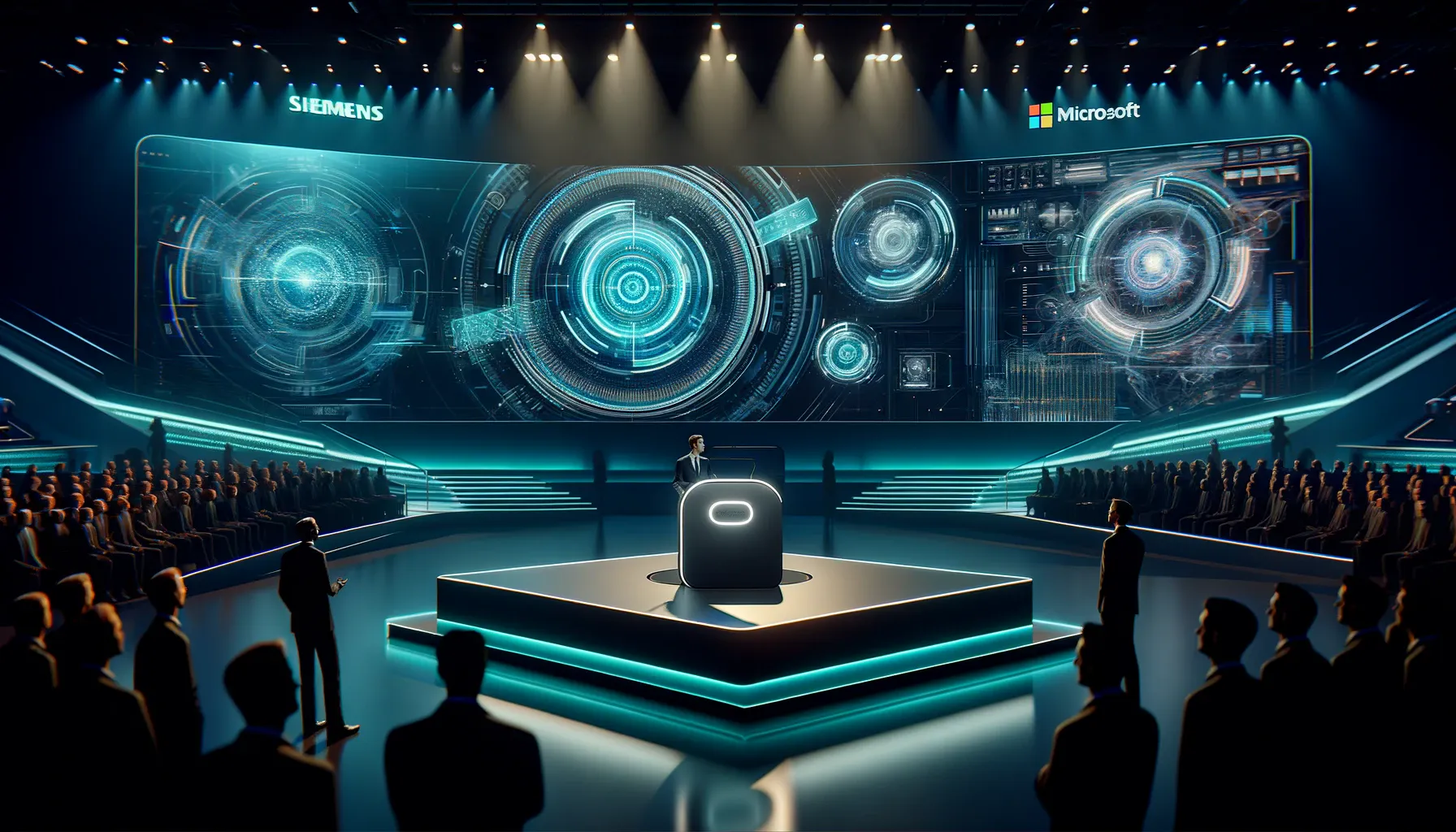Table of Contents
In a groundbreaking partnership, Siemens and Microsoft unveiled their AI-powered copilot at CES 2024, marking a pivotal moment in the convergence of artificial intelligence and industrial technology. This remarkable achievement has the potential to revolutionize various industries and elevate the capabilities of autonomous systems. In this article, we will explore the significance of the AI-powered copilot, its key features, real-world applications, and the impact it could have on different sectors.
Understanding the AI-powered copilot
The AI-powered Copilot, a groundbreaking collaboration between Siemens and Microsoft, represents a pioneering advancement in the field of co-piloting technology. At its core, this innovative system harnesses the capabilities of artificial intelligence and machine learning, seamlessly integrating them with advanced sensor technologies. The result is a versatile and intelligent co-piloting solution that enhances safety, efficiency, and decision-making across a wide range of applications. With its ability to analyze data in real-time and provide valuable insights, the AI-powered copilot is set to revolutionize various industries, from aviation and autonomous vehicles to manufacturing and logistics.
By leveraging the AI-powered copilot, organizations can benefit from increased automation, reduced human error, and improved operational performance. This cutting-edge system empowers professionals with augmented decision-making capabilities, making it a game-changer in today’s rapidly evolving technological landscape. Whether optimizing routes, assisting in complex tasks, or enhancing safety protocols, the AI-powered Copilot stands at the forefront of innovation, delivering intelligent co-piloting solutions that redefine the possibilities in numerous sectors.

Key Features of the AI-Powered Copilot
The AI-powered Copilot is a cutting-edge technology developed by Siemens and Microsoft that leverages advanced machine learning algorithms, sensor integration, seamless system compatibility, and human-machine collaboration to enhance various industrial and automotive applications.
Advanced Machine Learning Algorithms: It utilizes sophisticated machine learning algorithms to analyze vast amounts of data in real time. For instance, an autonomous vehicle application can process sensor data to identify and react to obstacles, traffic patterns, and road conditions swiftly.
Sensor Integration: It relies on an array of sensors like lidar, radar, and cameras to effectively navigate and interact with its surroundings. In a factory setting, it can use these sensors to detect and avoid obstacles, ensuring safe and efficient operations on the factory floor.
Seamless Integration with Existing Systems: Designed to seamlessly integrate with various industrial and automotive systems, the AI-powered copilot can be adapted for a wide range of applications. A smart manufacturing setup can integrate with existing machinery and production lines, optimizing processes and improving overall efficiency.
Human-Machine Collaboration: Rather than replacing human operators entirely, it is designed to enhance human-machine collaboration. For instance, in a medical setting, it can assist surgeons by providing real-time data and insights during surgeries, improving precision and patient outcomes while working alongside the medical team.
Applications Across Industries
AI-powered copilot refers to integrating artificial intelligence (AI) systems into various industries and sectors to assist human workers, enhance decision-making, and improve overall efficiency. Here are some instances of how this can be applied:

Manufacturing:
- It can work alongside human workers in manufacturing plants, assisting in tasks like quality control, monitoring machinery, and optimizing production schedules.
- They can predict maintenance needs for equipment, reducing downtime and preventing costly breakdowns.
- In robotics, these copilots can improve precision and coordination, making manufacturing processes more efficient and error-free.
Transportation:
- In the automotive industry, AI-powered copilots can enhance safety by assisting drivers with features like lane-keeping assistance, adaptive cruise control, and collision avoidance systems.
- In aviation, they can support pilots with navigation, autopilot systems, and monitoring of aircraft systems, reducing the risk of accidents.
- In public transportation, such as self-driving buses, these copilots can help manage routes and passenger safety.
Agriculture:
- It can autonomously manage precision farming tasks, including planting, watering, and harvesting crops, optimizing yield and resource usage.
- They can provide real-time data on soil conditions, weather patterns, and crop health, helping farmers make informed decisions.
- Drones equipped with AI copilots can monitor fields, detect pests, and apply targeted treatments, reducing the need for chemical pesticides.
Healthcare:
- In surgery, AI-powered copilots can assist surgeons with precise movements and real-time imaging, improving the accuracy of procedures.
- They can analyze medical images, detect anomalies, and assist in diagnostics, leading to faster and more accurate patient assessments.
- It can enhance patient care by monitoring vital signs, reminding patients of medication schedules, and providing personalized health recommendations.

Logistics:
- In logistics and supply chain management, AI-powered copilots can optimize route planning, vehicle scheduling, and inventory management, reducing costs and improving delivery efficiency.
- They can help warehouse workers locate items more efficiently using augmented reality interfaces.
- It can track shipments in real-time, providing transparency and ensuring timely deliveries.
Real-world Success Stories
These systems are transforming various industries by providing intelligent assistance and data-driven decision-making capabilities. Here are some real-world success stories that highlight the impact of this in different sectors:
- Automotive Advancements: Major automakers have integrated this into their vehicles, enhancing safety and the driving experience. These systems assist drivers with tasks such as lane-keeping, adaptive cruise control, and autonomous parking. For instance, Tesla’s Autopilot uses AI to analyze sensor data and control the vehicle, reducing accidents and making driving more convenient.
- Precision Agriculture: Farmers have benefited from these by achieving higher crop yields and resource efficiency. These copilots can analyze data from sensors, weather reports, and soil conditions to help farmers make informed decisions about planting, irrigation, and fertilization. This leads to better resource allocation and improved agricultural productivity.
- Manufacturing Efficiency: Factories that adopt such witness increased productivity and improved quality control. These systems analyze real-time data from the production line, enabling immediate adjustments and reducing downtime. For instance, an AI-powered copilot can detect anomalies in manufacturing processes and suggest corrective actions to maintain product quality.

- Healthcare Breakthroughs: Surgeons are using these for complex surgeries to enhance precision and safety. These systems provide real-time data analysis and guidance during procedures. For instance, the Da Vinci Surgical System employs AI to assist surgeons in performing minimally invasive surgeries with greater accuracy, leading to improved patient outcomes and shorter recovery times.
Challenges and Ethical Considerations
Certainly, AI-powered copilots, like autonomous vehicles or advanced driver assistance systems, offer many benefits but also raise ethical and safety concerns:
Data Security:
- Issue: The copilot systems rely on extensive data collection and analysis, raising privacy concerns.
- Instance: If personal or sensitive data is mishandled or exposed, it can lead to privacy breaches and potential misuse.
Liability in Case of Accidents:
- Issue: Determining responsibility in accidents involving AI-driven copilots can be challenging.
- Instance: If an autonomous vehicle equipped with a copilot system causes an accident, who is legally liable – the driver, the manufacturer, or the AI system itself?
Job Displacement:
- Issue: Widespread adoption of such may lead to job losses in industries like transportation or aviation.
- Instance: Self-driving trucks could displace truck drivers, potentially causing economic disruption and job displacement.

Bias and Fairness:
- Issue: Copilot systems may inherit biases from the data they are trained on, leading to unfair decisions or behavior.
- Instance: A navigation system might favor certain routes or destinations based on biased data, potentially leading to discrimination.
Ethical Decision-Making:
- Issue: Copilots may need to make ethical decisions in complex situations, such as accident avoidance.
- Instance: Should an AI copilot prioritize the safety of the occupants or pedestrians in an emergency? Ethical guidelines must be defined.
Dependence on Technology:
- Issue: Overreliance on AI copilots can erode human skills and decision-making capabilities.
- Instance: If pilots or drivers become overly dependent on automation, they may struggle to react effectively when faced with unexpected situations.
AI-Powered Copilot: Shaping a More Intelligent Future
Siemens and Microsoft’s AI-powered copilot unveiled at CES 2024, marks a pivotal moment in the convergence of artificial intelligence and industry. This groundbreaking technology promises to revolutionize various sectors by combining the power of AI with human expertise. One of its key features is adaptability, as it can seamlessly integrate into existing workflows, learn from human operators, and continuously improve its performance.
This adaptability ensures that it can cater to a wide range of industries, from manufacturing and logistics to healthcare and finance. By automating repetitive tasks, optimizing decision-making processes, and providing valuable insights, this innovation has the potential to significantly enhance productivity, reduce errors, and drive innovation across the board.
As we embrace this and similar advancements, it is crucial to strike a balance between harnessing the benefits of this technology and addressing the challenges it presents. Ensuring data privacy and security, mitigating biases in AI algorithms, and upskilling the workforce to collaborate effectively with AI systems are some of the challenges that need to be addressed.
However, this partnership between Siemens and Microsoft also serves as a testament to the possibilities of human-machine collaboration. It embodies the idea that AI can augment human capabilities, creating a synergy that leads to more intelligent and efficient outcomes. This represents a glimpse into the future, where machines and humans collaborate harmoniously, propelling us toward a smarter and more productive world.